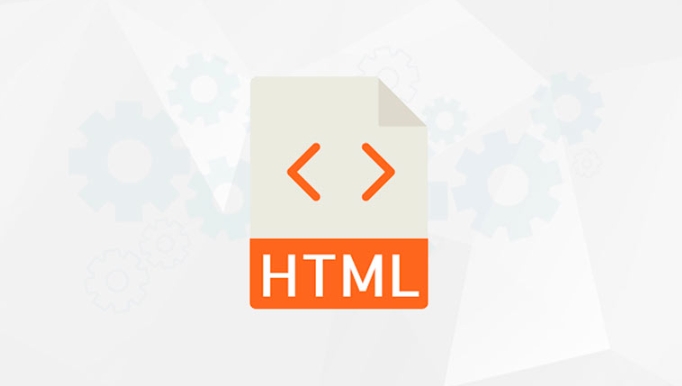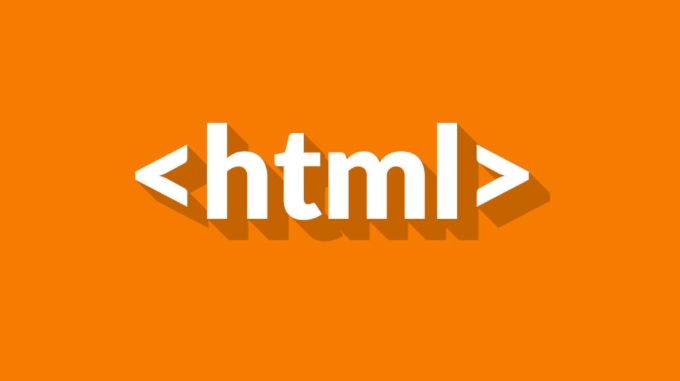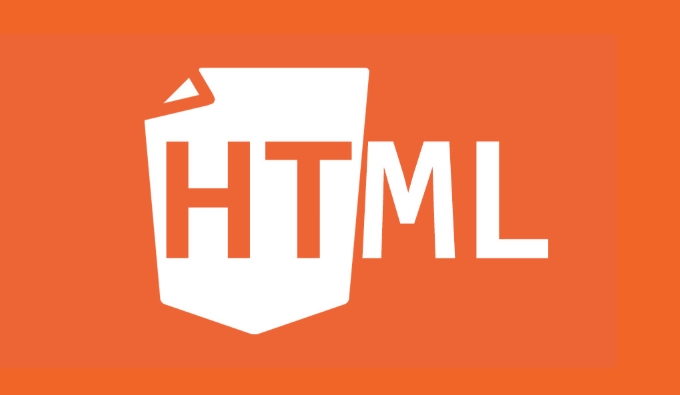HTML Linting is necessary because it can detect problems such as irregular label nesting, spelling errors, unclosed labels in advance, and unify the code style; common tools include HTMLHint, Tidy, eslint-plugin-html, and Stylelint plug-ins; the integration methods include editor real-time prompts, construction process checks, and automatic fixing of some problems; configuration suggestions include attribute quotation marks, lowercase tags, closed tags, and control nesting levels, but the rules should not be too many to avoid affecting the development experience.

Maintaining a good format and structure when writing code is not only convenient for yourself to maintain, but also for teamwork. HTML is one of the basic languages for front-end development. Although it seems simple, once a project becomes larger, the chaotic HTML structure can easily cause problems. At this time, it is necessary to use the HTML Linting tool.

Why do you need HTML Linting?
Many people think that HTML is nothing to check, as long as it can be displayed normally. Actually, it is not the case. Improper label nesting, misspelled attribute names, and unclosed tags may pose hidden dangers, especially in large-scale projects that are difficult to detect.
The Linting tool can help you discover these issues at the development stage and force a unified code style. For example, some teams require that all tags must be lowercase and attribute values must be quoted, which can be automatically checked by configuring Linter.

What are the common HTML Linting tools?
Currently, the mainstream HTML Linting tools are as follows:
-
<li> HTMLHint : Lightweight, flexible configuration, supports a variety of editor plug-ins.
<li> Tidy : A long-standing tool that can automatically fix some formatting problems.
<li> eslint-plugin-html : If you are already using ESLint to manage JavaScript code quality, this plugin allows you to check both HTML and JS in a process.
<li> Stylelint plug-in : Although mainly designed for CSS, you can also check the style part in HTML with the plug-in.
You can choose the right tool based on project size, team habits, and whether you have a code check process.

How to integrate into the development process?
It is not complicated to add Linting to the development process, there are several common practices:
-
<li> In the editor, prompt in real time:
-
<li> VS Code can install HTMLHint or eslint-plugin-html plug-in, and an error is automatically reported when saving the file.
<li> Sublime Text and Atom also have similar plug-ins.
-
<li> Use npm scripts to run in the CI process with
htmlhint or eslint commands.
<li> The build is interrupted when an error occurs to prevent the problematic code from going online.
- <li> Some tools such as Prettier, although not a special Linter, can be used together to automatically adjust the format.
It is recommended to enable prompts in the local editor first, so that problems can be found while writing code, which is more efficient.
Configuration suggestions and precautions
Most Linting tools support custom rules. Here are some suggestions:
-
<li> Always quoted in attribute values (avoid parsing errors)
<li> Tag names are uniformly lowercase (avoiding the mixing of uppercase and lowercase cases affecting readability)
<li> Forced closing of tags (especially in cases like
<li> where closed is often omitted)
<li> Control nesting levels (avoid excessively deep structure affecting maintenance)
Note that the rules should not be too many or too strict, otherwise it will affect the development experience. It is recommended to start with the default recommendation rules first, and then gradually customize them on demand.
Basically that's it. Although HTML Linting is not a high-end technology, it can indeed help you avoid many pitfalls in details.
The above is the detailed content of HTML Linting Tools for Code Quality. For more information, please follow other related articles on the PHP Chinese website!

Hot AI Tools

Undress AI Tool
Undress images for free

Undresser.AI Undress
AI-powered app for creating realistic nude photos

AI Clothes Remover
Online AI tool for removing clothes from photos.

Clothoff.io
AI clothes remover

Video Face Swap
Swap faces in any video effortlessly with our completely free AI face swap tool!

Hot Article

Hot Tools

Notepad++7.3.1
Easy-to-use and free code editor

SublimeText3 Chinese version
Chinese version, very easy to use

Zend Studio 13.0.1
Powerful PHP integrated development environment

Dreamweaver CS6
Visual web development tools

SublimeText3 Mac version
God-level code editing software (SublimeText3)

Hot Topics
 Applying Semantic Structure with article, section, and aside in HTML
Jul 05, 2025 am 02:03 AM
Applying Semantic Structure with article, section, and aside in HTML
Jul 05, 2025 am 02:03 AM
The rational use of semantic tags in HTML can improve page structure clarity, accessibility and SEO effects. 1. Used for independent content blocks, such as blog posts or comments, it must be self-contained; 2. Used for classification related content, usually including titles, and is suitable for different modules of the page; 3. Used for auxiliary information related to the main content but not core, such as sidebar recommendations or author profiles. In actual development, labels should be combined and other, avoid excessive nesting, keep the structure simple, and verify the rationality of the structure through developer tools.
 How to group options within a select dropdown using html?
Jul 04, 2025 am 03:16 AM
How to group options within a select dropdown using html?
Jul 04, 2025 am 03:16 AM
Use tags in HTML to group options in the drop-down menu. The specific method is to wrap a group of elements and define the group name through the label attribute, such as: 1. Contains options such as apples, bananas, oranges, etc.; 2. Contains options such as carrots, broccoli, etc.; 3. Each is an independent group, and the options within the group are automatically indented. Notes include: ① No nesting is supported; ② The entire group can be disabled through the disabled attribute; ③ The style is restricted and needs to be beautified in combination with CSS or third-party libraries; plug-ins such as Select2 can be used to enhance functions.
 Implementing Clickable Buttons Using the HTML button Element
Jul 07, 2025 am 02:31 AM
Implementing Clickable Buttons Using the HTML button Element
Jul 07, 2025 am 02:31 AM
To use HTML button elements to achieve clickable buttons, you must first master its basic usage and common precautions. 1. Create buttons with tags and define behaviors through type attributes (such as button, submit, reset), which is submitted by default; 2. Add interactive functions through JavaScript, which can be written inline or bind event listeners through ID to improve maintenance; 3. Use CSS to customize styles, including background color, border, rounded corners and hover/active status effects to enhance user experience; 4. Pay attention to common problems: make sure that the disabled attribute is not enabled, JS events are correctly bound, layout occlusion, and use the help of developer tools to troubleshoot exceptions. Master this
 Configuring Document Metadata Within the HTML head Element
Jul 09, 2025 am 02:30 AM
Configuring Document Metadata Within the HTML head Element
Jul 09, 2025 am 02:30 AM
Metadata in HTMLhead is crucial for SEO, social sharing, and browser behavior. 1. Set the page title and description, use and keep it concise and unique; 2. Add OpenGraph and Twitter card information to optimize social sharing effects, pay attention to the image size and use debugging tools to test; 3. Define the character set and viewport settings to ensure multi-language support is adapted to the mobile terminal; 4. Optional tags such as author copyright, robots control and canonical prevent duplicate content should also be configured reasonably.
 How to associate captions with images or media using the html figure and figcaption elements?
Jul 07, 2025 am 02:30 AM
How to associate captions with images or media using the html figure and figcaption elements?
Jul 07, 2025 am 02:30 AM
Using HTML sums allows for intuitive and semantic clarity to add caption text to images or media. 1. Used to wrap independent media content, such as pictures, videos or code blocks; 2. It is placed as its explanatory text, and can be located above or below the media; 3. They not only improve the clarity of the page structure, but also enhance accessibility and SEO effect; 4. When using it, you should pay attention to avoid abuse, and apply to content that needs to be emphasized and accompanied by description, rather than ordinary decorative pictures; 5. The alt attribute that cannot be ignored, which is different from figcaption; 6. The figcaption is flexible and can be placed at the top or bottom of the figure as needed. Using these two tags correctly helps to build semantic and easy to understand web content.
 Best HTML tutorial for beginners in 2025
Jul 08, 2025 am 12:25 AM
Best HTML tutorial for beginners in 2025
Jul 08, 2025 am 12:25 AM
TolearnHTMLin2025,chooseatutorialthatbalanceshands-onpracticewithmodernstandardsandintegratesCSSandJavaScriptbasics.1.Prioritizehands-onlearningwithstep-by-stepprojectslikebuildingapersonalprofileorbloglayout.2.EnsureitcoversmodernHTMLelementssuchas,
 How to embed content from another site using the html iframe tag?
Jul 04, 2025 am 03:17 AM
How to embed content from another site using the html iframe tag?
Jul 04, 2025 am 03:17 AM
Use tags to embed other website content into your own web page. The basic syntax is:, you can add width, height, and style="border:none;" to control the appearance; in order to achieve responsive layout, you can set the size through percentage or use containers to combine padding and absolute positioning to maintain the aspect ratio, while paying attention to cross-domain restrictions, loading performance, SEO impact, and security policies. Common uses include embedding maps, third-party forms, social media content and internal system integration.
 HTML for email templates tutorial
Jul 10, 2025 pm 02:01 PM
HTML for email templates tutorial
Jul 10, 2025 pm 02:01 PM
How to make HTML mail templates with good compatibility? First, you need to build a structure with tables to avoid using div flex or grid layout; secondly, all styles must be inlined and cannot rely on external CSS; then the picture should be added with alt description and use a public URL, and the buttons should be simulated with a table or td with background color; finally, you must test and adjust the details on multiple clients.






